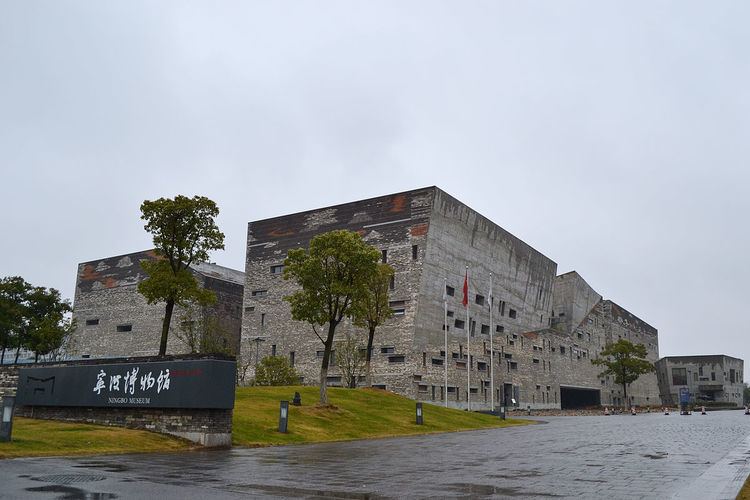Established December 5, 2008 Province Zhejiang | Website www.nbmuseum.cn Phone +86 574 8281 5555 | |
 | ||
Hours Open today · 9AM–4PMTuesday9AM–4PMWednesday9AM–4PMThursday9AM–4PMFriday9AM–4PMSaturday9AM–4PMSunday9AM–4PMMondayClosedSuggest an edit Similar Suzhou Museum, Ningbo Museum of Art, Yinzhou Park, Shanghai Museum, Ningbo Bang Museum | ||
Ningbo museum best in heritage
The Ningbo Museum (Chinese: 宁波博物馆), also known as the Yinzhou Museum (Chinese: 鄞州博物馆) or the Ningbo Historic Museum (Chinese: 宁波历史博物馆), is a museum in the city of Ningbo in Zhejiang Province, China. It is located in Yinzhou District and was opened on December 5, 2008. The museum focuses on Ningbo area history and traditional customs.
Contents
- Ningbo museum best in heritage
- David cheung retrospective rocky railway high closure ningbo museum of art
- Architecture
- Ningbo history exhibit
- Ningbo custom exhibit
- Bamboo art exhibit
- References
David cheung retrospective rocky railway high closure ningbo museum of art
Architecture
Ningbo Museum is designed by Wang Shu, the first Chinese citizen to win the Pritzker Architecture Prize in 2012. The design is a conceptual combination of mountains, water and oceans, as the East China Sea has played an important role in the history of Ningbo. Features of Jiangnan residences are integrated into the museum design by decorations made from old tiles and bamboo.
The first floor of the museum is constructed as a whole part, while the building starts to tilt on the second floor, giving the whole building a mountain and also a boat shape. This design alludes the geographical feature in Ningbo as well as the importance of over-sea commerce in its history, thus making the museum a symbol of Ningbo history and culture.
The outer wall decoration of Ningbo Museum is made in two ways. Some walls are decorated by millions of tiles collected in local areas. This sort of decoration itself was a common way of building an economical house in old days in Ningbo when cements are not introduced. Other walls are decorated with cement-covered bamboos. It is reported that Ningbo Museum was the first museum built with large number of used materials. Ningbo Tengtou Pavilion in Shanghai World Expo also employed the similar decoration.
Ningbo Museum won the Lu Ban Prize in 2009, the top architecture prize in China.
Ningbo history exhibit
Located on the second floor of the museum, this is the main exhibit of the museum, showing the history of Ningbo from the Hemudu culture until the Republic of China. Major stories are about ancient cultures, the expansion of the city, overseas commerce, the development of Eastern Zhejiang Scholars and Ningbo Commercial Group. Large amount of artefacts, historic photographs and models are displayed.
Ningbo custom exhibit
This exhibit is located on the third floor of the museum. Wax models and mock buildings and modern electronic techniques are used to show a traditional commercial street in Ningbo. Intangible cultural heritages of the city are also on display.
Bamboo art exhibit
This exhibit is located on the third floor of the museum, displaying old bamboo artefacts donated by Qin Bingnian, the son of the collector, Qin Kangxiang.
